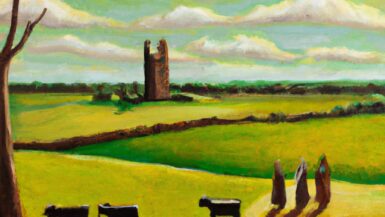Celtic religion and mythology, steeped in mystery and reverence for nature, have intrigued scholars and enthusiasts for centuries. The rich tapestry of tales, deities, and spiritual beliefs provides insights into how the ancient Celts perceived the world and their place within it.
Primary Sources: Deciphering the Ancient Beliefs
Most knowledge about Celtic religion comes from archaeological evidence, classical writers (like Julius Caesar), and later, medieval Irish and Welsh literature. Given that the Celts did not have a written tradition during their zenith, these sources offer invaluable insights, albeit sometimes fragmented.
Pantheon of Deities: Gods and Goddesses
The Celts did not worship a singular god; instead, their spiritual landscape was populated by a diverse range of deities.
- Lugh: Often referred to as a sun god or a skilled god, Lugh was associated with craftsmanship, war, and various skills. His versatility made him one of the most revered gods across the Celtic world.
- Brigid: A goddess of healing, poetry, and smithcraft, Brigid’s prominence can still be seen in modern-day St. Brigid’s Day celebrations in Ireland.
- The Morrigan: Representing war, fate, and death, the Morrigan was often visualized as a trio of sisters, showcasing different aspects of her dominion.
- Cernunnos: Recognizable by his antlers, Cernunnos was the god of animals, fertility, and the underworld. His depictions frequently appear on Celtic artifacts.
- Danu: A mother goddess, she was seen as the ancestral figure of the Tuatha Dé Danann, a group of supernatural beings in Irish mythology.
The Otherworld: A Realm Beyond Reality
Central to Celtic beliefs was the concept of the Otherworld – a realm existing parallel to the human world, populated by deities, spirits, and the deceased.
- A Land of Immortality: The Otherworld was a place where aging and sickness did not exist, often depicted as islands or hidden underground.
- Samhain and Beltane: These festivals were portals to the Otherworld, times when the boundary between the two realms was most permeable. It was believed that spirits and faeries could easily traverse between the worlds during these times.
- Avalon: In later Arthurian legends, Avalon was an Otherworldly island, where King Arthur’s sword Excalibur was forged and where he was taken to heal.
Sacred Sites: Nature and Divinity Intertwined
Nature played a pivotal role in Celtic religion. Sacred groves, wells, rivers, and hills were considered portals to the Otherworld.
- Stone Circles: Megalithic structures, like Stonehenge, were religious sites possibly used for ceremonies, rituals, and marking astronomical events.
- Holy Wells: Scattered across the Celtic lands, these wells, dedicated to specific deities, were places of worship and healing.
- Trees: Druids, the priestly class in Celtic society, often held ceremonies in sacred groves, believing trees to be powerful and sacred.
Druids: The Spiritual Leaders
The druids were the religious elite, overseeing rituals, festivals, and maintaining religious traditions. Their role was multifaceted – they were priests, educators, and advisors to Celtic chieftains.
- Education: Druids underwent rigorous training, often lasting up to twenty years, to memorize verses, rituals, and laws.
- Human Sacrifice: While contested, some classical sources suggest that druids performed human sacrifices for prophecies or to appease gods.
Celtic Festivals: Marking the Seasons
The Celtic calendar was intrinsically linked to agriculture and the seasons.
- Imbolc: Celebrated in early February, heralding the beginning of spring.
- Beltane: Marking the start of summer in May, Beltane was a fertility festival.
- Lughnasadh: Celebrated in August, this harvest festival was dedicated to the god Lugh.
- Samhain: Occurring in November, Samhain marked the Celtic new year and was a time to honor the dead.
Transition to Christianity
With the arrival of Christianity, many Celtic religious practices were incorporated into Christian rituals to ease the transition. For instance, Samhain evolved into All Hallows’ Eve, and Brigid’s significance was carried forward with the canonization of St. Brigid.
Modern Resonance
Celtic religion and mythology continue to inspire modern literature, art, and neo-pagan practices. Its influence can be seen in festivals, music, and the continued fascination with the Otherworld.
Diving deep into Celtic religion and mythology offers a tantalizing exploration of a society profoundly connected to nature, its cycles, and the mysteries of the universe. The tales, deities, and beliefs, though ancient, still resonate, highlighting the timeless nature of the human quest for understanding and connection.







Leave a reply